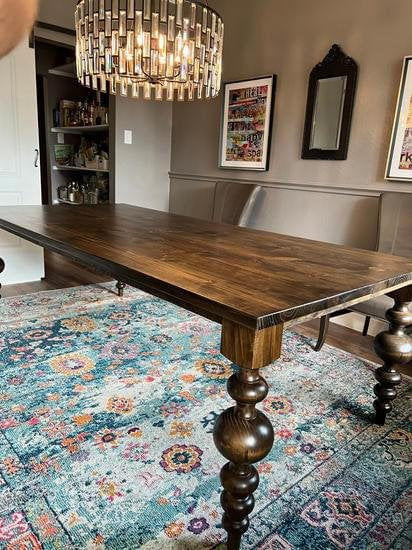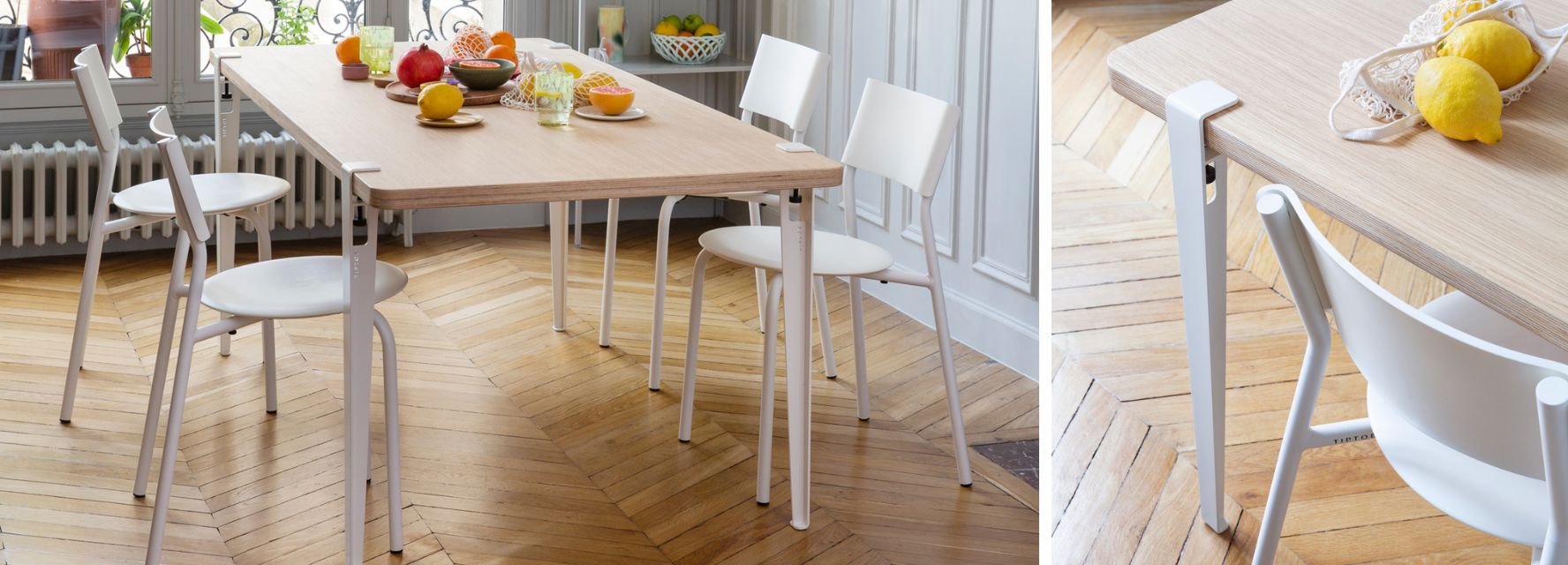Add Charm and Elegance to Your Space with Distinct Dining Room Table Legs
Add Charm and Elegance to Your Space with Distinct Dining Room Table Legs
Blog Article
From Typical to Modern: Locate the Suitable Dining-room Table Legs for Your Style
The selection of eating room table legs plays a pivotal role in specifying the total personality of your space, bridging the gap between traditional workmanship and contemporary aesthetics. While timeless layouts such as cabriole and transformed legs evoke a sense of classic elegance, contemporary styles like hairpin and geometric choices present a possibility for striking aesthetic interest. Assessing the right balance in between these styles calls for a nuanced understanding of your existing design and personal preference. As you consider these elements, the question stays: how can you perfectly integrate these diverse leg designs to create a harmonious eating experience?
Understanding Table Leg Styles
The variety of dining-room table leg designs can dramatically affect both the aesthetic appeals and capability of the room. Each leg design contributes distinct sensible functions and visual components, catering to varied design choices and use requirements. Understanding these styles is vital for choosing the ideal table that lines up with your overall indoor style vision.
As an example, conical legs use a clean, timeless look that can enhance an area's sophistication, while stand bases give security and make the most of legroom, making them perfect for smaller sized spaces. Barrette legs, a trademark of mid-century modern layout, present a commercial flair, permitting for a ventilated, open feeling. Likewise, trestle legs evoke rustic beauty, offering robust support and a feeling of eternity.
In addition, the choice of products plays a substantial function. Wood legs can bring warmth and appearance, whereas metal options typically share a sleek, modern ambiance. Ultimately, comprehending table leg styles is important for creating a cohesive dining area that mirrors personal style while ensuring usefulness and convenience. By thoughtfully considering these aspects, you can improve both the visual and useful charm of your eating area.
Standard Table Leg Options
When picking dining area table legs, standard choices frequently embody timeless elegance and workmanship. These styles show a rich heritage and a commitment to top quality, making them excellent for those who appreciate traditional looks.
Among one of the most legendary traditional leg styles is the cabriole leg, identified by its elegant bent form. This design usually includes decorative carvings and is most generally found in Queen Anne and Chippendale furnishings. An additional popular alternative is the turned leg, which flaunts a collection of smooth, rounded forms that provide a traditional appearance while maintaining security.
Moreover, the straight leg, while basic, uses a strong and unadorned structure that can blend perfectly with a range of tabletop styles. For those drawn to ornate outlining, claw-and-ball feet legs evoke a sense of grandeur and can offer as a sensational focal factor in any kind of dining space.
Last but not least, pedestal bases, although not strictly legs, offer an alternate traditional option that allows for ample legroom and can be beautifully carved. Each of these standard leg styles contributes to the general ambiance of a dining-room, marrying feature with visual appeal.

Modern Table Leg Designs
Modern table leg styles use a varied range of styles that stress tidy lines and ingenious materials. These layouts often focus on functionality while acting as striking focal factors within an eating room. Minimalist appearances prevail, with legs crafted from materials such as metal, glass, and crafted timber, which contribute to a ventilated and modern feel.
One preferred style is the hairpin leg, characterized by its slim, tapered framework that supplies security without frustrating the table top (dining room table legs). This style is commonly discovered in mid-century contemporary furnishings and can effortlessly match numerous eating table shapes. An additional fad is the usage of geometric shapes, where legs may tackle asymmetrical or angular kinds, including visual passion and a touch of virtuosity

Mixing Designs for One-of-a-kind Spaces
Commonly, homeowners seek to develop distinct dining spaces that mirror their personal style by blending numerous design elements. This technique enables the unification of varied looks, causing a harmonious yet unique setting. As an example, combining a rustic wood table with streamlined, modern steel legs can create an attractive comparison that elevates the space's general appeal.
Additionally, integrating vintage table legs with modern table tops can stimulate a feeling of history while maintaining a modern-day sensibility. Such combinations not just showcase private preference however likewise urge imagination, allowing property owners to curate a room that really feels both individual and welcoming.
Color plays a critical role in this blending procedure; choosing table legs that match or contrast with the existing color plan can boost visual passion. Whitewashed legs can soften the boldness of a dark table surface area, developing a balanced visual.
Tips for Choosing the Right Legs
Selecting the right table legs is essential for attaining both functionality and aesthetic appeal in your eating area. Begin by taking into consideration the overall style of your room. Conventional setups take advantage of legs that feature detailed carvings or transformed layouts, while contemporary rooms may call for sleek, minimalist styles.
Next, evaluate the elevation and security of the legs. dining room table legs. Conventional eating tables vary between 28 to 30 inches in height, so make sure the legs complement this dimension for convenience. Additionally, durable materials, such as hardwood or metal, can boost security and longevity
Assess the leg form also-- alternatives consist of right, tapered, or stand styles. Straight legs supply a traditional see this page appearance, while tapered More Help legs can add a touch of style. Pedestal bases offer adequate legroom and are suitable for smaller sized areas.
Verdict
In summary, selecting the suitable dining area table legs needs careful consideration of both contemporary and traditional styles. By balancing leg style, elevation, and product with the overall design, a natural and welcoming atmosphere can be attained.
The variety of eating space table leg designs can substantially influence both the aesthetics and functionality of the space. Inevitably, understanding table leg styles is crucial for producing a natural eating area that mirrors individual style while making certain practicality and convenience.One of the most famous standard leg styles is the cabriole leg, characterized by its stylish rounded shape. Straight legs offer a timeless appearance, while tapered legs can include a touch of sophistication.In summary, choosing the optimal eating area table legs needs cautious consideration of both contemporary and conventional designs.
Report this page